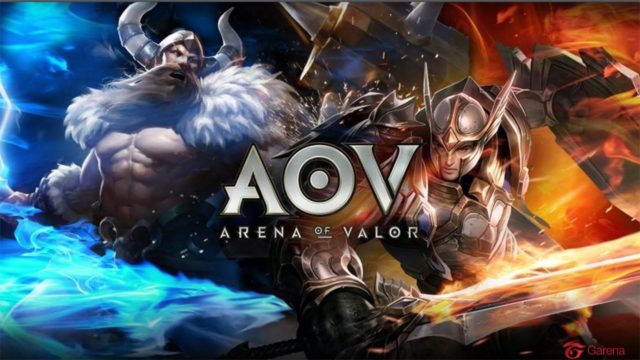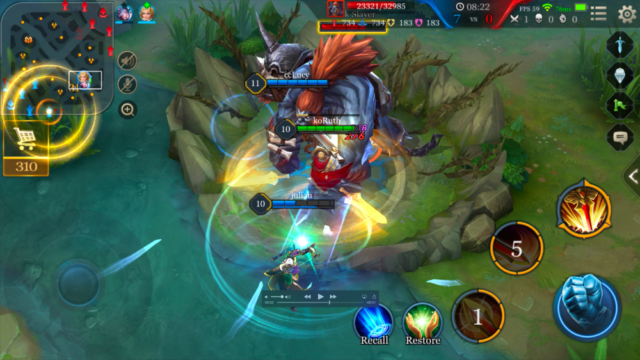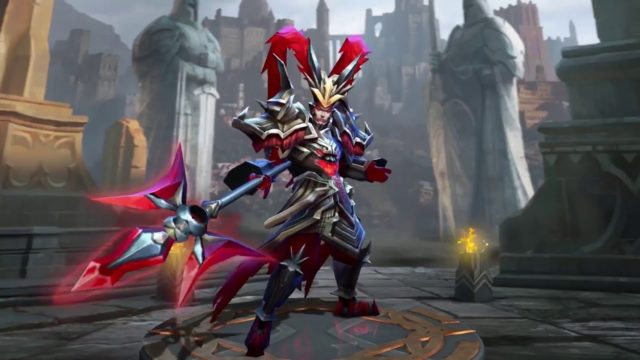
MOBA (sometimes called ARTS) is a term that many Nintendo faithful might not be very familiar with. Multiplayer Online Battle Arena (or Active Real-Time Strategy) games are a mainstay of the PC gaming scene. League of Legends is likely the most recognizable game in the genre, or at least one of the titles that even the most insular of Nintendo players will have heard the name of. MOBAs are a sub-genre of Real-Time Strategy games, but each unit of the team is a living, breathing human player.
The objective of MOBAs, broadly speaking, is typically to overtake or destroy a structure controlled by the opposing team. Players charge into battle alongside computer-generated allies that assist in taking on enemies and seizing/destroying the target. As mentioned, League of Legends is one of the top MOBA titles in the world, but there are others like DotA (Defense of the Ancients), Smite, and Heroes of the Storm, all of which are mainstays of the burgeoning eSports scene. In brief, MOBAs are huge and only continuing to become huger in the world of competitive video game playing.
Another MOBA title that’s been making waves in recent years is Arena of Valor. The game is highly venerated (and controversial) in China (where it’s called Kings of Glory), but it’s also become immensely popular stateside on iOS and Android. It’s touted as the number one mobile game in the world, generating sales in the billions of dollars every quarter. With the impending expansion to Switch, Arena of Valor will be making a big step into the world of console gaming. So what’s all the fuss, you might be asking? Well, we went hands-on with Arena of Valor and we’ll do our best to fill in the blanks!
Arena of Valor is published by Tencent Games, which is also the publisher of League of Legends. What sets Arena of Valor apart from its pseudo-sibling LoL is the emphasis on accessibility. LoL relishes in its complexities and nuance, whereas Arena of Valor is meant for quick bursts of play with a low learning curve. There are three types of battles to choose from: 5×5, 3×3, and 1×1 with 34 total characters to choose from. The characters are much like those in titles like Overwatch or Paladins: over the top, cartoony heroes with different backstories and larger than life personalities. The game starts players off with only a handful to choose from, however, daily play unlocks more characters, along with various challenges and special events.

Gameplay itself is designed to be fast-paced and simple. Maps are arranged so that one half belongs to the player’s team and the other half to the enemy. There are three paths or routes to move along on each map that grant access to the opposing team’s core. The routes, no matter which is chosen to navigate, are pocked with defense towers that serve to protect the opposing core. The goal is to destroy the enemy core and rack up as many kills as possible along the way.
The action in Arena of Valor is very engaging, but as someone who doesn’t really dabble in MOBAs, I definitely found myself a bit disoriented to start. The game begins with a simple tutorial which does a solid job of explaining the basics of the controls and concepts, but was a tad too brief for me to competently absorb everything that was happening. There are a variety of attacks, buffs, character classes, moves, and strategies to learn and all of it is thrown right in the player’s face. It can be overwhelming, but I found that after going through a couple matches, the basics of the game started to become clearer.

Players have a handful of different attacks to choose from during battle. The attacks themselves do a myriad of things, from basic physical damage to buffs. There’s a cool down period that helps prevent spamming and adds some additional strategy into the proceedings, as knowing which moves to execute and combine, and at which times, is imperative to success. It’s also crucial to be aware that character classes naturally support one another. There are six total: Tank, Warrior, Assassin, Mage, Marksman and Support. If utilizing a large brawler type of character, for example, having someone like a Marksman in tow can go a long way towards extending that teammate’s lifespan out on the field. There’s a number of ways to mix and match in Arena of Valor and it’s fun finding out which combinations work best.
What wasn’t quite so fun (for me, at least) was the overall movement speed of the game. Arena of Valor plays out very sedately. Attacking and movement simply feel too slow. Of course, take that with a grain of salt because obviously what is too slow for my tastes might be perfect to someone else. That said, I wish Arena of Valor punched things up a bit. Perhaps the sluggish movement speed is a testament to the title’s mobile roots. Thankfully, the same thing (for the most part) can’t be said about the rest of the presentation. Arena of Valor is no stunner, but visually everything works. It’s unspectacular in comparison to some of the more impressive titles on Switch like Super Mario Odyssey, but I still found the art direction and soundtrack to be serviceable.
If I ultimately don’t sound impressed by Arena of Valor, let me be clear: this isn’t a bad game. There’s a reason it’s played by so many people around the world. Its core gameplay is fun, the sense of competition it fosters is undeniable, and overall it’s a sound, competent MOBA that many players will likely immediately become hooked on. For me, however, it was a somewhat staid introduction. I’ll definitely be there day one when the game finally, officially launches on Switch, but I don’t think I’ll be holding my breath until then.




 ShareThis
ShareThis





